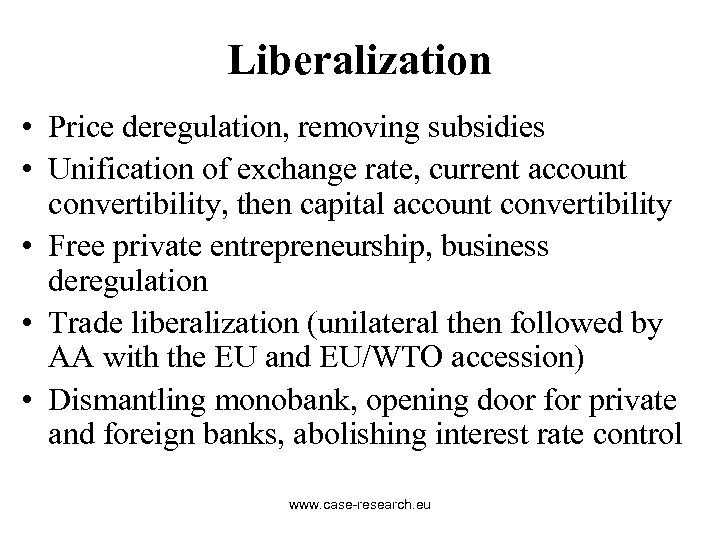-
Authoradmin
-
Comments0 Comments
-
Category
Содержание

In addition, SWOT analysis can be beneficial in evaluating a particular supply source, a business process, a product market or the implementation of a particular technology. There are also problems with environmental scanning related to interpretation of the information that has been gathered. Determination of relevance, familiarity with the topic and information sources, language usage, time limitations, and accuracy of information all play a role in the analysis process.

For example, if your company is not doing well financially, a SWOT analysis can help you to figure out why this is happening and what you can do to change it. This means that the SWOT framework can improve the quality of internal and external analysis. Strengths and weaknesses are internal to your company—things that you have some control over and can change. Examples include who is on your team, your patents and intellectual property, and your location. Opportunities and threats are external—things that are going on outside your company, in the larger market.
What is Value Chain Analysis?
https://1investing.in/ is the most renowned tool for audit and analysis of the overall strategic position of the business and its environment. It is important to note that strengths and weaknesses are intrinsic value-creating skills or assets or the lack thereof, relative to competitive forces. To execute a good SWOT analysis, you first need to ascertain the purpose of evaluation. Then make a 2×2 matrix and label the four quadrants as strengths, weaknesses, opportunities and threats. Whether something represents an opportunity or a threat may depend on subjective judgment. Environmentalism resulting from concern about climate change may represent a threat to some analysts, while others may see it as an opportunity.

For example, if there’s an economic recession, that could be a threat to your business. Alternatively, if there’s a new piece of legislation that’s passed, that could be an opportunity for your business. Industrial relations can be a big issue for businesses, but one way to overcome this limitation is to try to improve communication with employees and resolve any conflicts that might arise. Because SWOT analyses tend to view circumstances as being simpler than they really are, organizations can sometimes overlook important strategic contacts.
Another way to overcome the limitation of SWOT analyses is to look at the big picture and take into account all of the factors that could affect a given situation. Together with other techniques like Value Chain Analysis and RBV, SWOT analysis improves the quality of the internal analysis. For example, managerial weakness may be solved by a change of managerial personnel, training and development etc. Weakness due to excess manpower may be addressed by restructuring, downsizing, delayering and voluntary retirement schemes. WT Strategies are basically defensive strategies and primarily aimed at minimizing weaknesses and avoiding threats. WO Strategies attempt to take advantage of opportunities by overcoming its weaknesses.
SCIENCE & TECHNOLOGY
DO use PESTLE analysis in conjunction with other techniques, such as SOOT analysis, PRIMP-F analysis , Porter’s five forces , competitor analysis or scenario planning etc. DO incorporate your analysis within an ongoing process for monitoring changes in the business environment. A SWOT analysis helps the leader in uncovering market opportunities that make profits and in fending off new competitors. It enables one in creating a plan to maximize strength or manage weaknesses of threats based on the particular scenario. Since it offers scalable results local communities can have data expansion to regional, national, and international levels. It helps the businesses identify and utilize the strengths and weaknesses to their greatest advantage.
It can limitations of swot an organization’s unique strengths, find weaknesses in its competitors, and identify new arrests, prospective customers, and emerging technologies. A SWOT analysis is used to strategically identify areas of improvement or competitive advantages for a company. In addition to analyzing thing that a company does well, SWOT analysis takes a look at more detrimental, negative elements of a business. When it comes to business analysis, there are a variety of different tools and methods that can be used in order to gain insights and understanding. This tool is a framework that is used to identify the strengths, weaknesses, opportunities, and threats of an organisation.

List external opportunities available in the company’s current and future environment, inthe ‘opportunities block’ on the left side of the matrix. Relate strengths and weaknesses, wherever possible, to industry key factors for success. Directors, managers, employees and other stakeholders, can better understand the company’s position, health and loopholes using such analysis. Thus, the management can work on corporate weaknesses, enhance competitiveness, prepare for the unfavorable situations and grab the upcoming opportunities. It is a matrix documentation that makes it a visual analytical tool for a quick preview of critical points related to a business.
SWOT Analysis Benefits
For example, the objective of a SWOT analysis may focused only on whether or not to perform a new product rollout. With an objective in mind, a company will have guidance on what they hope to achieve at the end of the process. In this example, the SWOT analysis should help determine whether or not the product should be introduced.
This type of analysis can be used in a variety of different settings, such as businesses, nonprofits, and even individual projects. A SWOT analysis is a powerful tool for identifying both the strengths and weaknesses of a business, as well as the opportunities and threats it faces. While it has many advantages, there are also some disadvantages to using this tool. Overall, however, a SWOT analysis can be an extremely helpful way to take stock of your business and develop a plan for moving forward.
- One of the best ways to do this is to have a flipchart and write down everyone’s responses there.
- Analysts present a SWOT analysis as a square segmented into four quadrants, each dedicated to an element of SWOT.
- When compiling your individual SWOT factors, I would recommend you also include applicable elements from your own department such as the HR function as well as general business factors.
- The factors may be narrow product range, declining machinery, inadequate facilities for research and development, poor decision making.
- Offline sales account for a significant portion of the market share, with hand trucks being sold in physical stores, warehouses and service centers.
- While identifying a common mission helps give direction to its activities, SWOT analysis will not provide any results if the members cannot agree.
SWOT Analysis is an aggregation and analysis of FOUR different aspects of the business with a view to assessing the current status and future prospects of the business. These Four aspects that are covered under SWOT Analysis are Strengths, Weaknesses, Opportunities, and Threats. It is a comparative framework that describes and lists out the present strengths and weaknesses of a company. Then it lists out the possible opportunities the company has to grow and the threats endangering the company. This analysis is useful in strategic planning within the organization. Also, it gives a clear picture of where any company stands in the present day vis-à-vis the competitors.
Disadvantage: Subjective Analysis
It is definitely a useful aid in generating alternative strategies, through what is called a TOWS matrix. Opportunities and threats, however, are external factors that are not created by the company but emerge as a result of the competitive dynamics caused by ‘gaps’ or ‘crunches’ in the market. It is an initial level of business planning that segregates every information into four segments.
Some individuals have the tendency to identify favorable factors, especially if they are analyzing a particular object that fancies their interest. This bias is often reflected on the long list of strengths and opportunities as opposed to insubstantial list of weaknesses and threats. This familiarity equips them with knowledge needed to support decisions or directives. A SWOT analysis can also be helpful when you’re trying to solve a problem within your business. For example, if you’re having trouble increasing sales, you might use a SWOT analysis to identify the strengths and weaknesses of your sales process.
In conclusion, market competitive analysis is a key aspect of strategic planning and helps businesses make informed decisions about their market position and future growth. By understanding the competitive landscape, businesses can identify opportunities and threats, and develop effective strategies to achieve their goals. A SWOT analysis is a planning tool used to understand key factors – strengths, weaknesses, opportunities, and threats – involved in a project or in an organisation. It involves stating the objective of the organisation or project and identifying the internal and external factors that are either supportive or unfavourable to achieving that objective. SWOT is often used as part of a strategic or planning process, but can be applied to help understand an organisation or a situation, and also for decision-making for many different scenarios.
Opportunities may arise from factors such as government/industry, technology, and competition. However, while the elements can appear deceptively simple and easy to apply, experience shows that to do a SWOT analysis that’s both effective and meaningful, requires time and a significant resource. Deciding what the strengths and weaknesses of an organisation are, as well as assessing the impact and probability of opportunities and threats, is far more complex than first appears.
Note that data are important to improve the integrity of the analysis. However, people with no background in research are prone to use dubious data and generalizations. The SWOT framework ignores the fact that an item or more specifically, a factor or condition can both be a strength and a weakness or an opportunity and a threat. As stated above, the SWOT analysis does not have a built-in mechanism for prioritization, so leaders are going to have to handle this on their own. With the help of others on the team, leaders can begin to assign levels of importance to each component of the SWOT analysis. This helps everyone know what the most significant issue to address first is.
SWOT analysis is an inexpensive tool that can help in strategic management to a great extent. It gives an understanding of the health of the business and how to maintain it and improve it where necessary. It can also analyze a full product line, changes to brand, geographical expansion, or an acquisition.
Leave A Comment Cancel reply
Recent Comments
- A WordPress Commenter on Hello world!
- admin on Investors may have profited from leaked U.S. data: ECB research paper
- admin on Investors may have profited from leaked U.S. data: ECB research paper
- admin on Australian market set to open lower
- Mr WordPress on Wall St. higher as financial, consumer stocks rise
Request A Call Back
Recent Comments
- A WordPress Commenter on Hello world!
- admin on Investors may have profited from leaked U.S. data: ECB research paper
- admin on Investors may have profited from leaked U.S. data: ECB research paper
- admin on Australian market set to open lower
- Mr WordPress on Wall St. higher as financial, consumer stocks rise
Archives
- June 2024
- May 2024
- April 2024
- March 2024
- February 2024
- December 2023
- September 2023
- July 2023
- June 2023
- May 2023
- April 2023
- March 2023
- February 2023
- January 2023
- December 2022
- November 2022
- October 2022
- September 2022
- August 2022
- July 2022
- June 2022
- May 2022
- April 2022
- March 2022
- February 2022
- January 2022
- December 2021
- November 2021
- October 2021
- September 2021
- August 2021
- June 2021
- July 2020
- December 2018
- April 2016
Categories
- – 337
- – 666
- – 824
- – 983
- "baixar 1xbet App Asi Como Fazer O 1xbet Download 2024 Atualizado – 883
- 1Win AZ Casino
- 1win Azerbaycan Bukmeker Kontorunun Saytı Login Başlanğıc Qeydiyyat – 93
- 1Win Azerbaycan Giriş login və Qeydiyyat yukle – 87
- 1win Azerbaycan Müqəddimə Login Və Qeydiyyat Yukle Ebiz Prima Nusa – 437
- 1win Azərbaycan Formal Sayt, Qeydiyyat, +500% Bonuslar 1win Nadir – 735
- 1WIN Bonus
- 1Win Brasil
- 1WIN Official In Russia
- 1win Turkiye
- 1win Yükl? Android Apk V? Ios App 2023 Pulsuz Indir Kazino – 303
- 1win Yukle Android Və Ios üçün Necə Indir Azərbaycan üçün Mobil Proqram – 862
- 1winRussia
- 1xbet apk
- 1xBet App: baixe o aplicativo para dispositivos iOS e Android – 775
- 1xbet Azerbajan
- 1xbet Azerbaycan Yükle Mobil Az Indir Androi Белспецпартнер – 636
- 1xbet Azerbaydjan
- 1xbet Brazil
- 1xbet É Legal Simply No Ano De Spain? Uma Verdade Para 2023? Tudo Explicad – 29
- 1xbet giriş
- 1xbet Kazahstan
- 1xbet Nadir Formal Sayt 1xbet Azərbaycan Bukmeker Kontoru, Bonuslar, Apk – 144
- 1xbet Yüklə: Idman Mərcləri üçün ən Yaxşı Mobil Proqram 1xbe Student Group Itech Solution Smarter Faster Simpler – 415
- Avis Spin Million 2024 : Arnaque ou Casino en Ligne Fiable ? – 523
- AZ Most BET
- Az rəsmi mobil versiya və proqramı 256
- Azerbajany Mostbet
- Azərbaycanda ən məşhur bukmeker tətbiqləri yüksək bonuslara 1win az – 364
- Azərbaycanda Onlayn Mərc Evi Və Kazino – 62
- Azərbaycanda Onlayn Mərc Evi Və Kazino – 914
- Azərbaycanda turizm Tourizim və Səyahhət Agentliyi – 281
- b1bet apostas
- Betmotion brazil
- Betmotion Cadastro Passo An Andatura 2024 – 785
- Betmotion Stop E Casino 200% Bônus Até $1500 – 312
- Bewertungen über Vulkanvegas Lesen Sie Kundenbewertungen Zu Vulkanvegas Com 4 Vonseiten 51 – 293
- Bewertungen Zu Vulkanvegas Dechiffrieren Sie Kundenbewertungen über Vulkanvegas Com – 874
- Bookkeeping
- Bukmeker Və Kazino Icmalı – 232
- casino
- Chatbot Programming
- Crypto News
- Daha əla Bukmeyker Rəsmi Saytı – 620
- Das Beste Casino Deutschlands – 591
- das beste Casino Deutschlands – 72
- das beste Casino Deutschlands 371
- Dating
- Défi de Parieur Fandom – 960
- Dll Missing Errors
- Education
- FinTech
- Forex Trading
- Giris Və Qeydiyyat, Bonuslar Bukmeker Veb Saytında Mosbet – 993
- Graj w kasyno za darmo lub na pieniądze 120
- India Mostbet
- IT Образование
- LeoVegas Finland
- LeoVegas Sweden
- machine a sous gratuite
- Mərclər 1WIN saytında ᐉ Bukmeker və kazino 1WIN AZ – 991
- Mostbet #1 Online Casino In Bangladesh – 320
- mostbet apk
- Mostbet Aviator Az Demo Oyunu O'ynaydi Va Pul Uchun Mosbet Com Saytidan Yuklab Oling – 586
- mostbet az 90
- Mostbet Az Qeydiyyat Bonusla 550 Azn – 125
- Mostbet Az-90 Kazino Azerbaycan ən Yüksək Bukmeyker Rəsmi Hesab – 834
- mostbet azerbaijan
- Mostbet Azerbaycan
- Mostbet Casino
- Mostbet Dən Bukmeker Bonusları 309 – 175
- mostbet giriş
- Mostbet in Turkey
- Mostbet India
- Mostbet kazinosu
- Mostbet Kazinosunda Aviator Oyununu Oynayın Mostbet-də Aviator Oyunu – 373
- mostbet kirish
- Mostbet kumarhanesi
- MostBet Mobile App və Bukmeker Şirkətinin Mobil Versiyası – 622
- mostbet ozbekistonda
- mostbet royxatga olish
- mostbet şikayet Bahis Forum Bahis Forumu 258
- mostbet uz
- Mostbet UZ Kirish
- Mostbet Yukle ᐈ Android, Ios Mostbet Indir Azərbaycan üçün – 749
- MostBet yüklə Azərbaycanda Mostbet yükləyin IOS və Android cihazlar 223
- Mostbet-az90 Başlanğıc Və Qeydiyyat Online Casino Ilə Rəsmi Sa – 386
- Notepad++
- pagbet brazil
- Pin Up Azerbaycan – 735
- pin up casino
- Pin UP Casino AZ
- Pin Up Casino Azərbaycan üçün imkanlarını təqdim edir – 678
- Pin Up Peru
- Pin-Up Casino kontorunun təsviri, pin up az – 452
- PinUp apk
- PinUp, Azerbaycandaki en iyi kumarhanedir – 599
- Predictor aviator apk indir Aviator 1win casino oyunu hilesi 585
- Quais São Os Mais Importantes Bônus Do On Line Casino Online Brasileiro Flag Up? – 595
- Rəsmi Veb Saytı Bağlayın️ Iti Ödənişlər, Gündəlik Bonuslar, ümumən Bunlar Sizi Pin Up Casinoda Gözləyir – 884
- Sober living
- Spielen Bei Vulkan Vegas Casino Pass Away Casino Games Sowie Gewinnen! – 199
- Təyyarə oyunu 1win 1win Aviator game – 427
- Uncategorized
- UZ Most bet
- Vulkan Las Vegas: Tauchen Sie Dieses In Eine Welt Voller Spielelust – 862
- Vulkan Vegas Added Bonus Und Promo Code 2022 Bonusprogramm – 890
- Vulkan Vegas Bonus Code 2024: Alle Vulkanvegas Promo Codes Und-zeichen Aktionscode Bestandskund – 237
- vulkan vegas DE
- vulkan vegas De login
- Vulkan Vegas Poland
- VulkanVegas Poland
- Официальный сайт Мостбет Ставки на спорт Mostbet 307
- Форекс обучение
- Форекс партнерская программа

